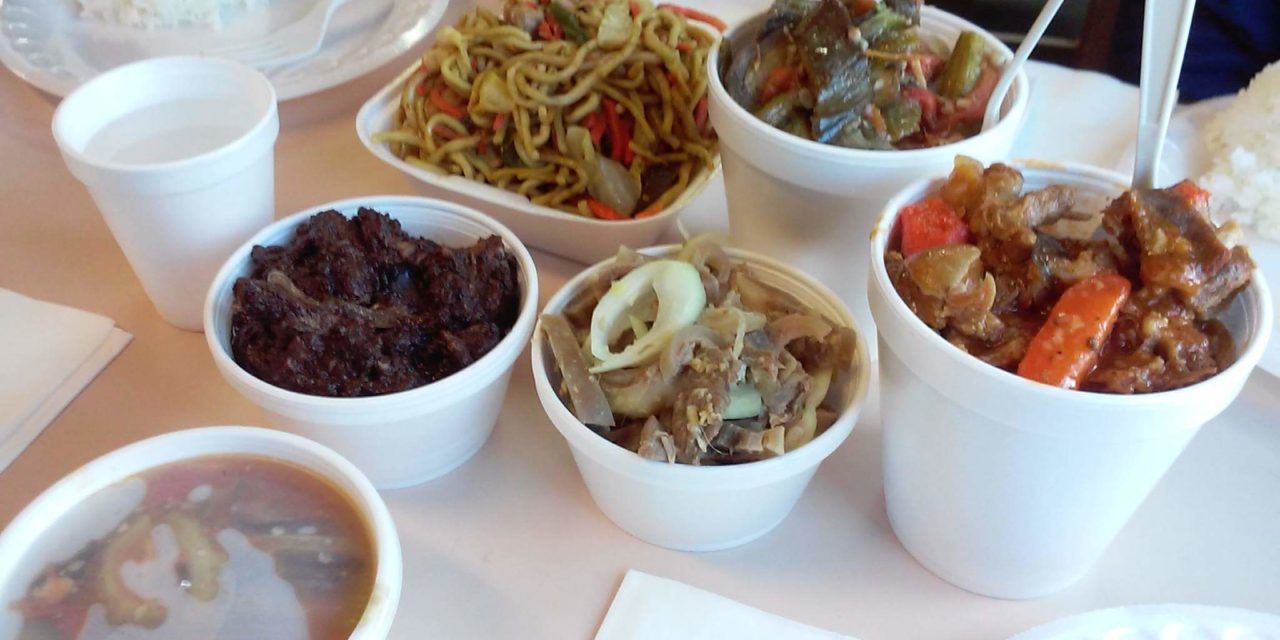By Gavin Arucan | Staff Writer
Because of our obsession with plate lunches, polystyrene foam (more commonly referred to as styrofoam) containers have become synonymous with a daily meal here in Hawaiʻi. Almost everywhere you can buy local food, your entrée, scoop of rice, and mac salad will be served up in that familiar foam take-out container. It’s light and easy to carry out in a plastic bag and to eat out of whether you’re at the beach, in your parked car, or in front of your television at home. The containers are also conveniently disposable, so there’s no need to wash any dishes afterwards.
Convenient as they may be, styrofoam food containers are harmful to the environment, especially being both non-biodegradable and non-recyclable. The light styrofoam products only contribute less than 1% to the total weight of the average landfill, but their size leads styrofoam to take up more than 30% of landfill space. On an island in which open land is oh-so-precious, growing landfill space is the last thing we need.
Of course, much like any form of trash on Oʻahu, a good portion of styrofoam products will end up in our oceans after probably being blown around in the wind due to their light weight. After breaking down in the water, small marine life will consume it and die from it due to choking or intestinal blockage. The plastic monomer used in manufacturing styrofoam is capable of causing cancer, and, as the food chain goes, the carcinogen can end up right in our spicy ahi, which is most likely served in a styrofoam container.
With such a negative effect on the environment, a ban on styrofoam seems like a no-brainer at first glance. In fact, Maui’s mayor, Alan Arakawa, signed a bill just this Monday that will effectively ban styrofoam food containers throughout the island. The ban will go into effect on December 31, 2018. Other cities such as San Francisco have banned styrofoam in food service either completely or partially.
However, a ban on styrofoam has many consequences, especially in closely-knit communities on Oʻahu, and Mayor Arakawa is fully aware of them.
In a letter to the Maui County Council, Arakawa writes, “There was a lot of research that went into crafting this bill, and for many restaurants and food-serving establishments, pricing was an issue. The bottom line is that right now, there is no product out there that is cheaper than polystyrene containers. At least, not yet.”

Biodegradable paperboard containers would be a more environmentally friendly alternative to polystyrene, but could have negative economic effects. (Photo by Gavin Arucan)
There are environmentally-friendly alternatives to styrofoam such as paper, but none of them compare to the sheer affordability of polystyrene. Styrofoam can cost as little as a third of the price of paperboard. Popular restaurants on Oʻahu will have little problem switching to paper. Some, like Rainbow Drive-In, already have. However, the smaller, family run stops might not be able to afford containers more expensive than styrofoam without losing profit.
Roger Morey, the executive director of the Hawai‘i Restuarant Association, testified against Honolulu’s polystyrene ban proposal, claiming that a ban would force local restaurants to pay up to 500 percent more for alternative food service containers.
In a quote featured on GoFoam Hawaii’s (an organization against the foam ban) website, Morey states, “The proposed foam ban would likely be the tipping point for many locally-owned family restaurants: the higher cost of alternative containers coupled with the recent minimum wage increase and rising food costs may force local owners to close down their restaurants.”
The $1,000 fine for using styrofoam after the ban goes into effect is described by even Mayor Awakawa as “excessive.” Any struggling business would be doomed if it had to pay that fine.
The ban would also prohibit food items served in styrofoam even if it is packaged out-of-state. That means no more cups of instant ramen. While there are dozens of other instant noodle brands that don’t use styrofoam containers, the ones in styrofoam packaging are by far the cheapest. Poor families and college students will need to cough up more than 30 cents for their next cheap meal.
If handled badly, Maui’s polystyrene ban could mean the end for many locally owned businesses that lack the money to pay for better containers. However, if handled well, it could lead to a healthier and cleaner island. The city of Honolulu is currently considering a styrofoam ban for itself. Now that Maui has officially passed its ban, Honolulu will probably follow through on its ban as well. However, with so many locally owned businesses on the line, many of which I probably frequent for lunch, I recommend that Honolulu be cautious with its ban. Let’s use Maui as an example and learn from its successes and mistakes. Maybe some exceptions need to be made, such as allowing pre-packaged food items or lowering the penalty fine. Rushing out a bill could harm too many people on Oʻahu, so the city of Honolulu should be meticulous in crafting its bill in a way that won’t harm local restaurants too badly.






